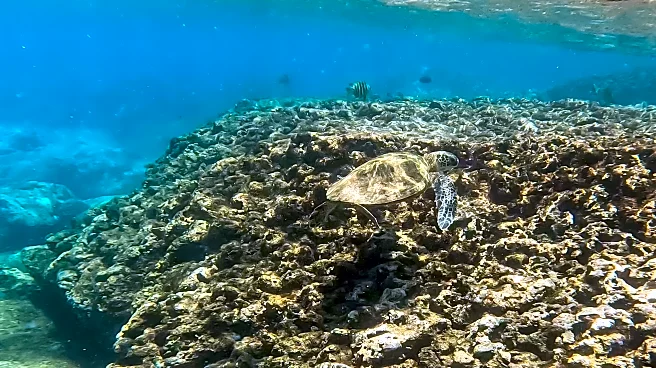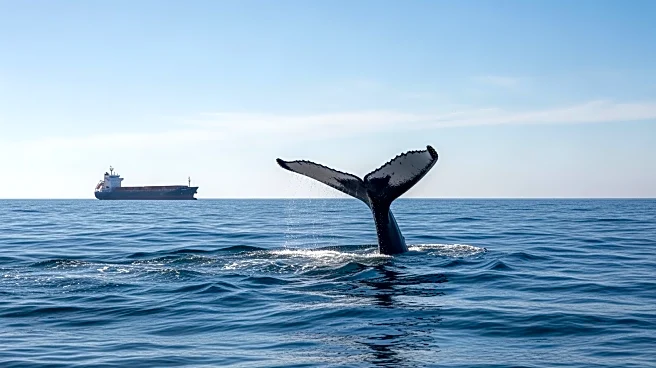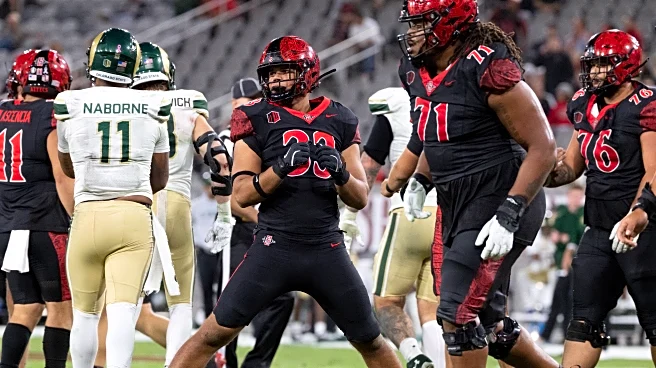Mac Poepoe grew up diving in the waters off Molokai to spear honu — Hawaii’s distinct species of green sea turtle — that helped feed his family. He also often saw other fishermen hunt honu for profit,
selling its prized meat to shops and restaurants across the channel on Maui.
Those widespread commercial killings helped land the honu on the federal endangered species list in 1978, when Poepoe, a lifelong Friendly Isle resident, was 29 years old. The move didn’t include any cultural exemptions for Hawaiians such as Poepoe, who had sustainably harvested the turtles for generations.
“What it does, it criminalizes us,” Poepoe said Friday. “That law applies to everybody like us that was born eating turtle. It’s not our primary source of food, but it’s one of our resources that we rely on.”
For years, there’s been debate over whether the federal turtle protections go too far in stopping that longtime Hawaiian practice along with the runaway commercial harvests that helped decimate the honu. Now, after the species’ dramatic comeback, new momentum is afoot to revive such cultural harvests for the Hawaiians who’d like to see them continue.
The International Union for Conservation of Nature — a network of governments and conservation groups — actually declared that Hawaiian green sea turtles were no longer endangered more than a decade ago. The federal government, however, still designates the species as endangered and Hawaiian green sea turtles are still protected under U.S. law.
Then, last month, the group expanded its declaration to cover green sea turtles worldwide, saying it considers them a species of “least concern,” meaning they have a less than 10% chance of going extinct in the next century.
Weeks earlier, Western Pacific Regional Fishery Management Council Executive Director Kitty Simonds asked federal fisheries leaders to help restore rights to kill some green sea turtles for cultural purposes, such as special meals.
Meanwhile, some longtime turtle experts say it’s unfair that researchers and academics have been able to collect the turtles under federal endangered-species law exemptions while Hawaiians haven’t. It’s time, they say, to put such decisions back in the hands of the Indigenous people who managed the islands’ natural resources for generations.
“Clearly there’s ample turtles in Hawaii these days that some can be sustainably and legally used by the native people of these islands for their own chosen traditional cultural purposes,” George Balazs, a retired federal fisheries biologist who spent more than 45 years working to protect the honu, said last week.
Balazs added that many of his former colleagues at the National Oceanic and Atmospheric Administration felt the same but “it’s not in their best interests to speak freely.”
NOAA officials did not respond to questions last week about the honu’s protected status and whether it is being reviewed.
Many of the agency’s fisheries staff remain on furlough amid the federal government shutdown. Federal fisheries officials last considered in the early 2010s whether to take the honu off the Endangered Species List and opted to keep it there.
Both Balazs and Poepoe support taking the honu off the list and returning the species to state management, where authorities could allow cultural takes while keeping the bans against commercial harvests and general harassment of the turtles in place.
Sightings of honu swimming in nearshore waters and foraging for food have grown common in recent years. They’re now a popular visitor attraction, with tourists notoriously slowing traffic at Laniākea to catch a glimpse of the honu that swim ashore daily there on O‘ahu.
Those honu sightings, however, used to be rare.
Their numbers across the Hawaiian Islands dropped after European contact, largely because they became a prized delicacy for soup. Locals, as Poepoe noted, would harvest honu not just for their own food but also to can the meat and sell to restaurants.
But in recent decades, the honu bounced back. Balazs counted just 67 nesting females in the species’ main nesting spot of East Island in French Frigate Shoals, during his first research trip there in the 1970s. The tiny uninhabited island is part of the protected Northwestern Hawaiian Islands, about 550 miles from Honolulu.
By 2004, he counted 467 nesting females after the species had spent nearly three decades on the endangered species list. A 2019 study further estimated that the honu population had reached 83% of its “pre-exploitation” levels, or the time prior to being harvested en masse and commercially.
Despite that success, federal conservation officials have kept the honu on the endangered list largely due to growing climate change threats and sea level rise. They’ve also refused to grant an exemption for any Native Hawaiians looking to resume traditional, non-commercial honu harvesting.
Two Native Hawaiians, Daryl Nuesca and Daniel Peter Kaneho-lani, sued the government unsuccessfully more than 30 years ago, arguing the blanket ban violated their cultural rights.
Some native tribes in Alaska, they pointed out, have an exemption to hunt endangered species — so how is it fair to bar Hawaiians from hunting sea turtles? But the federal judge who ruled against them said the Alaska situation was different because those tribes heavily relied on the animals for their livelihood.
More recently, Simonds said last month that green sea turtle harvests aren’t possible across the Pacific due to the Inter-American Convention for the Protection and Conservation of Sea Turtles. That international pact, which the U.S. is part of, only allows narrow exemptions to take protected turtles for economic reasons.
In her letter, Simonds called on NOAA Fisheries Assistant Administrator Eugenio Piniero Soler to “explore changes” to the pact.
Wespac, widely known for promoting greater commercial fishing access in the Pacific, has also advocated resuming sea turtle harvests for decades — but not without controversy.
In 2014, the group was reprimanded by federal fisheries officials when its staff was found to have improperly helped craft a petition to remove the honu from the endangered species list. The petition was submitted by the Association of Hawaiian Civic Clubs after the Maunalua Hawaiian Club, led by Simonds, had introduced the proposal.
Simonds was unavailable last week to discuss the issue, she said by email, because she was on Maui to attend community meetings on fishing issues.
One of the key topics they planned to discuss, she said, was the status of the honu.
Not all Hawaiians, however, agree that the traditional turtle harvests should resume.
The topic has come up at KUA, a Hawaii nonprofit that promotes letting local communities manage the natural resources they rely on, but there’s never been enough consensus to move forward, executive director Kevin Chang said.
Poepoe said on Molokai it’s the Hawaiians born after the federal ban was put in place who tend to oppose honu harvests. Those who tend to support the practice, he added, strongly rely on hunting and fishing to put food on their tables.
Poepoe added that he has recommendations ready for how to manage turtle harvests, but he doesn’t plan to share them until federal fisheries officials seriously consider lifting the ban.
“I look at management seriously. I’m not just out there to raid the ocean or raid the mountains, you know?” Poepoe said. “This is the thing I learned. Whenever we go out and take something in nature, have a plan to replace what we take.”
At a 2023 Hawaii Pacific University workshop on sea turtle research, retired biologist and limu specialist Wally Ito recounted a conversation he had five years earlier with Tommy Hashimoto, a Kauai community activist, who died in 2019.
Hashimoto told Ito that he and others used to occasionally harvest honu at Hanalei Bay, selecting one turtle to help feed community members and letting the rest go. Hashimoto added that if the ban persists much longer the cultural connection would be lost — and “we cannot lose that knowledge.”
___
This story was originally published by Honolulu Civil Beat and distributed through a partnership with The Associated Press.













